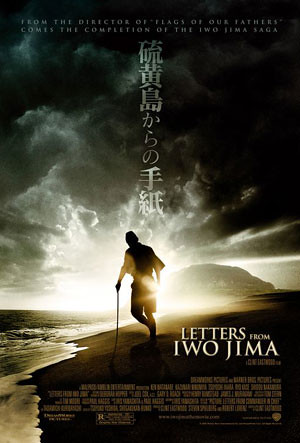1 hr. 39 min.
R for strong violence/gore and language.
written by: Neil Marshall
produced by: Christian Colson
directed by: Neil Marshall
I made sure I watched this movie in the middle of an afternoon instead of late at night. I knew going in that it could be the type of movie that would send me to bed with the heebie jeebies. The latest trend in suspense and horror movies has not excited me in the least. All I see are countless ripoffs, remakes, and regurgitations of classic and mediocre movies that have already been done. If anything, I've been quite disappointed and disinterested in the popularity and apparent demand for various films depicting graphic decapitations, dismemberment, and mutilations. Thing is, I do like a good scare. I'm more of a "less-is-more" kinda guy. I don't need to see it all to be freaked out but I'll occasionally handle me some gore as long as the plot seems decent enough. Then I remembered this movie that originally came out in the U.K. in 2005 and here in the states in 2006.
One year after a tragic accident, three adventurous girlfriends meet up again to continue their outdoor thrill-seeking ways in a remote part of the Appalachian Mountains for a caving trip. Sarah (Shauna Macdonald), whose life is shattered by the accident, and her friend, Beth (Alex Reid) meet up with their headstrong friend, Juno (Natalie Mendoza) at a cabin outside of their destination. As the unelected leader of the group, Juno has planned out their trip in an effort for them to help Sarah take hold of her life again. At the cabin, they are joined by Juno's young risk-taking protégé, Holly (Nora-Jane Noone), and two sisters, doctor-in-training Sam (MyAnna Buring) and thrill-seeking Rebecca (Saskia Mulder). After spending the night getting to know each other and reminiscing, they drive to the caves the next morning and begin their exploration.
As they spelunk their way deep below the surface of certainty, these six women are faced with facing the unknown below. Disaster strikes when a cave-in blocks their route back to the surface. The girls soon learn that, a misguided effort to bring the group closer together, Juno has brought them to an unexplored cave in the spirit of "claiming it" for themselves. Therefore, no one knows where they are to come rescue them. The group splinters off and each push on, hoping for another exit. They make their way through suffocating crevices as they burrow their to the next unknown cavern. Then, something starts stalking them, crawling around the crevices, blind eyes alive with hunger, toothy maws desperate for human food. As secrets from Sarah and Juno's past percolate below the surface, the threat inside the cave grows frightening – and fatal. It will take everything the ladies have to survive this "Descent" into darkness...and death.
This film is beautifully photographed, loaded with iconic images, and blessed with a level of believability that barely ever ebbs, it's is a well made genre effort. Indeed, it is truly the reference-packed horror highlight reel its director Neil Marshall intended it to be. I had never even heard of the guy and then after reading up on him I see how he has loaded the film with horror favorite homages, from "Deliverance" and "Carrie" to "Aliens" and "The Shining", the British filmmaker, equally famous for his werewolf riff "Dog Soldiers", has crafted an original take on an old formula. Seasoned fear fans will recognize the old dark house motif rather easily, since the vast majority of the movie takes place in a labyrinthine set of caves as perfectly pitch black as a satanic mass. Add in some unspeakably nasty creatures, an overriding sense of foreboding, and some increasing bad blood between the characters, and you've got a recipe for a wonderfully evocative motion picture macabre. Oddly enough, it's an overall atmosphere and ambiance that didn't hit off apparently in theaters. It''s obvious Marshall only meant to give a overall sketch of his adventure gals, I'm sure the quick clip dimensions got lost in all the expansive big screens. Similarly, the director also wanted to push the limits of shadows. He purposefully made the movie as lightless as possible, hoping this would render the suspense more palatable. Unfortunately, the energy saving measures of some theaters rendered the scenes unwatchable.

That's why this works best at home on DVD, especially in a reconfigured print that has much of the arterial spray – and a major subplot – intact. At home, the film finally delivers with the subtlety of certain sequences reborn, and the geyser-like gush of blood filling many of the previous R-rated killings, Marshall's movie shifts from an exercise in dread to a fully realized gruefest. Indeed, the faint of heart should be prepared for the girl's last stand act in all it's gruesome-ness. Although I never saw the U.S cut of this film I can't imagine a more intense, claustrophobic, full-realized horror film than this. With this unrated cut maintaining the original ending (the "non-happy" UK version) and upping the visual amperage a tad, what was seemingly a single light shining into a big black void experience has been rendered far more frightening with just the slightest hints of approaching horror featured alone the fringes of the action. When you add in the increased character dynamic and the lush look of the landscapes, you get a far more compelling cinematic situation.
This movie couldn't be successful without this cast. Instead of going the American route and casting "hotties" to run around half-nekkid, we're given actors that fully realize the headstrong and passionate characters written for them. It's refreshing to see these basically average albeit physically capable women, that could easily be women that you or I could know, take an adventure that tests their friendships, sanity, and survival instincts. I also liked that I felt for these characters but I never really got attached to them. In fact, I started getting suspicious of some of them. To me, that means the actors and the director are succeeding in what they set out to do.
There is real artistry in what Marshall has managed here and I'm lad my viewing was alone at home. Viewed as an inventive psychological thriller, an old dark house spook show, or a post-modern meditation on man vs. nature and the unnatural, "The Descent" deserves the attention of any serious scare fan. While far from a masterpiece, it definitely represents an ingenious and distinctive deviation from your standard horror film.
Special Features:
The DVD has all the necessary bonus features that any fan wishes for – beginning with two full length audio commentaries. First, director Marshall with several of his crew members (including producer Christian Colson, editor Jon Harris, assistant editor Tina Richardson and Production Designer Simon Bowles), and the second features Marshall again with almost all of the female cast (Nora Jane "Holly" Noone, Saskia "Rebecca" Mulder, MyAnna "Sam" Buring, Shauna "Sarah" McDonald, and Alex "Beth" Reid). Making an effort not to repeat himself between the two discussions, the director does a good job of guiding the others through all their anecdotes and insights. The second conversation, given over to lots of jokes and good natured ribbing lets the girls explain their approach to the story. The more "serious" commentary deals with many of the production problems, and how CGI was used to enhance, not replace, the physical feel of the effects. I skimmed through both tracks and from what are heard...they were great terrific and do a good job of filling in details about the film's unique dynamic. Similarly, a 41 minute "Beneath" the Scenes featurette shows the in-studio set construction, the evolution of the crawlers design, and the occasional emergency that required an inventive solution (like the use of a bathtub to create a small pond). In this feature, I found it funny that the director and crew were calling the film "Six Chicks with Picks" during production.
We're also treated to a series of outtakes (mostly hilarious bloopers and practical jokes played on the cast and crew), deleted and extended scenes (almost all dealing with the relationship between the girls prior to entering the cave), a collection of stills and a set of cast and crew biographies. Perhaps the most interesting added feature though is something called "DescENDING" and as the name implies, it deals with the alternative cut of the film. When it first arrived in the UK in 2005, Marshall had created a very dark, disturbing finale that offered little hope for the characters. When it was tested in America, the scene did quite well. But when a truncated version was shown, stopping at a crucial point and suggesting some possibility of optimism for the lead, US audiences really approved. Lionsgate demanded the change, and that's what arrived in theaters back in August. Marshall is on hand to describe the situation, and this nine minute interview offers some interesting facts about the film's many influences (including Terry Gilliam's "Brazil"?) and his feelings about the ending controversy. It's a nice addition to what is already a well supplemented DVD package.
The Skinny:
- The cast members were taken to a rock-climbing center in Derbyshire to help prepare them for filming.
- The appearance of the creatures was kept secret from the cast members until the first scene in which they encounter them was filmed. When the cast were finally filming the scene where the girls encounter the crawlers, the girls were genuinely scared and screamed the building down, running off set and laughing.
- The cave drawings featured rhinoceros. Rhinoceros went extinct in North America during the Pliocene which ended 1.8 million yrs ago. Also, Petroglyphs (cave drawings) have only been found from about 10,000 years ago.
- The Number 30 bus destroyed at Tavistock Square during the terrorist bombings of London in July 2005 had been carrying a placard on the side advertising the film. The placard featured a bloodied Shauna Macdonald staring out of darkness, and quotes from several positive reviews of the film. Famously, as seen in Mario Rosenberg's award nominated photos of the scene, the half of the placard left undamaged by the blast read "Outright Terror, Bold and Brilliant," a quote from a review by Total Film magazine. Several commentators, including writers for Variety and The Times, remarked on this unfortunate coincidence. Three of the four bombs detonated that day specifically targeted the London Underground transport system, leaving many victims trapped underground for several hours. There were initially concerns that the film, due for release the next day, might have to be delayed for reasons of sensitivity but ultimately Pathé chose to release the film with a slightly retooled marketing campaign. The US promotional campaign, managed by Lionsgate Films, is significantly different from the original European one.
- This film's North American Poster Art is borrowed from a portrait photograph by Philippe Halsman of Salvador Dali, entitled Salvador Dali In Voluptate Mors. (The photo itself was inspired by surrealist Dali's gouache Female Bodies as a Skull painting) This same imagery was also used for the Silence Of The Lambs poster.







